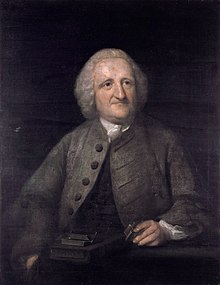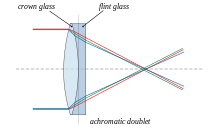Biography
Dollond was the son of a Huguenot refugee, a silk-weaver at Spitalfields, London, where he was born. He followed his father's trade, but found time to acquire a knowledge of Latin, Greek, mathematics, physics, anatomy and other subjects. In 1752 he abandoned silk-weaving and joined his eldest son, Peter Dollond (1731–1820), who in 1750 had started in business as a maker of optical instruments; this business went on to become Dollond & Aitchison. His reputation grew rapidly, and in 1761 he was appointed optician to the king.
In 1758 he published an "Account of some experiments concerning the different refrangibility of light" (Phil. Trans., 1758), describing the experiments that led him to the achievement with which his name is specially associated, the discovery of a means of constructing achromatic lenses by the combination of crown and flint glasses, reducing or eliminating chromatic aberration (distortion due to colour fringes). Leonhard Euler in 1747 had suggested that achromatism might be obtained by the combination of glass and water lenses. Relying on statements made by Sir Isaac Newton, Dollond first disputed this possibility (Phil. Trans., 1753), but subsequently, after the Swedish physicist, Samuel Klingenstierna (1698–1765), had pointed out that Newton's law of dispersion did not harmonize with certain observed facts, Dollond began experiments to settle the question.
Early in 1757 Dollond succeeded in producing achromatic refraction by the aid of glass and water lenses, and a few months later he made a successful attempt to get the same result by a combination of glasses of different qualities (see History of telescopes). For this achievement the Royal Society awarded him the Copley Medal in 1758, and three years later elected him one of its fellows. Dollond also published two papers on apparatus for measuring small angles (Phil. Trans., 1753, 1754).
In 1761, Dollond became the optician of King George III. He died of apoplexy on 30 November, of that year in London.

